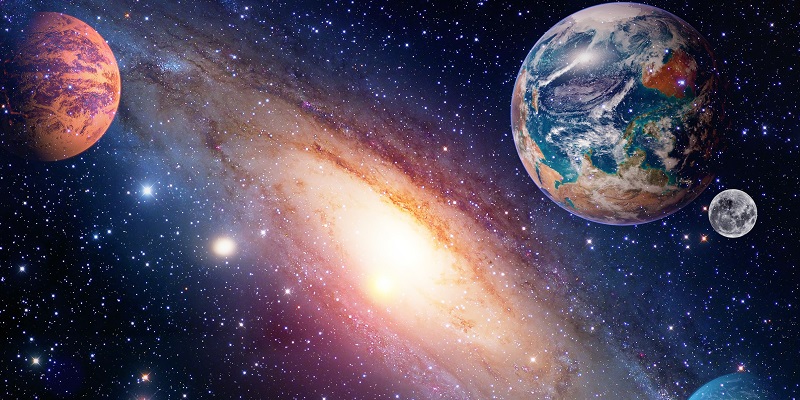How the Big Bang Gave Us Our Universe
September 29, 2019
One of the many puzzling questions that have baffled scientists throughout history is “how did it all begin?” The universe couldn’t just appear, so how did it come to be? Amazing scientists like Edwin Hubble and Arno Allan Penzias have created hypotheses and have obtained data through experiments and observations about what happened 13.8 billion years ago. There are many theories as to how our universe, and potentially other universes, came into existence, but by far the most well known and most accurate is the Big Bang.
The Phrase “the Big Bang Theory” was created by Georges Lemaître and has been popular in the astrophysicist community for decades, but it hit the mainstream in 2007. A simple explanation of how the Big Bang happened is we don’t know. What we do know is that in the first few seconds after the Big Bang, the universe expanded rapidly, and then slowed down and cooled in temperature. “In the first second after the universe began, the surrounding temperature was about 10 billion degrees Fahrenheit (5.5 billion Celsius),” says space.com. Many scientists say that if you look at the universe one second after the Big Bang, we would see a 10-Billion degree sea of Protons, neutrons, electrons, anti-electrons, neutrinos, and photons. When the Universe cooled the neutrons combined with nuclei to form neutral atoms. This, in turn, started the process of making planets and stars including our beloved Earth and sun.
The Universe expanded and grew quickly, but it never stopped expanding. Even to this day, the universe is moving and it is taking us with it. “An astronomer named Edwin Hubble noticed galaxies were moving away from us,” says space place. Edwin noticed that the galaxies were moving, but that the galaxies farthest away from us are moving faster. This also means that because the universe is separating, there was a time that we were all close together, like Pangea in the beginning years of Earth. While this could make it harder for us to travel to different planets, this could also give us a huge breakthrough in learning more about the birth of the universe.
There are a lot of people who say the Big Bang is false. People question how an explosion in nothing could turn into planets and galaxies, which is a fair question, but it does have an answer. The Big Bang created dust and particles that formed together to make stars and other forms. The stars and other dust particles would come together to make a cloud-like shape. “As other clouds get close, gravity sends these objects careening into one another and knits them into larger spinning packs,” says NASA Vis. As the bundles of stars and dust get pulled in by gravity they make galaxies with the spinning forms. There is also a belief that the Big Bang never happened and that there is another force that is at work including the steady-state universe theory saying that matter in the universe is constantly created. NASA has looked into this and even proved with photo evidence that the radiation that surrounds the farthermost galaxies and stars are from the Big Bang. There are hundreds of questions about the Big Bang, some of them even the pros can’t answer, but there are still piles of proof that the Big Bang did happen 13.8 billion years ago.
There are still a lot of boxes left unchecked, but give it another few years, and scientists will find more and more evidence on what happened all those years ago that gave birth to the universe. Given the rise of technology, NASA and other companies will have the tech to produce more and more information about the world outside our atmosphere. The more we learn, the closer we will get to travel to other planets and formations inside and outside our solar system.






















































































































































Arlenne Olvera Arreola • Sep 30, 2019 at 10:07 am
I like this article. It was written very well. Good job with all the information you included.